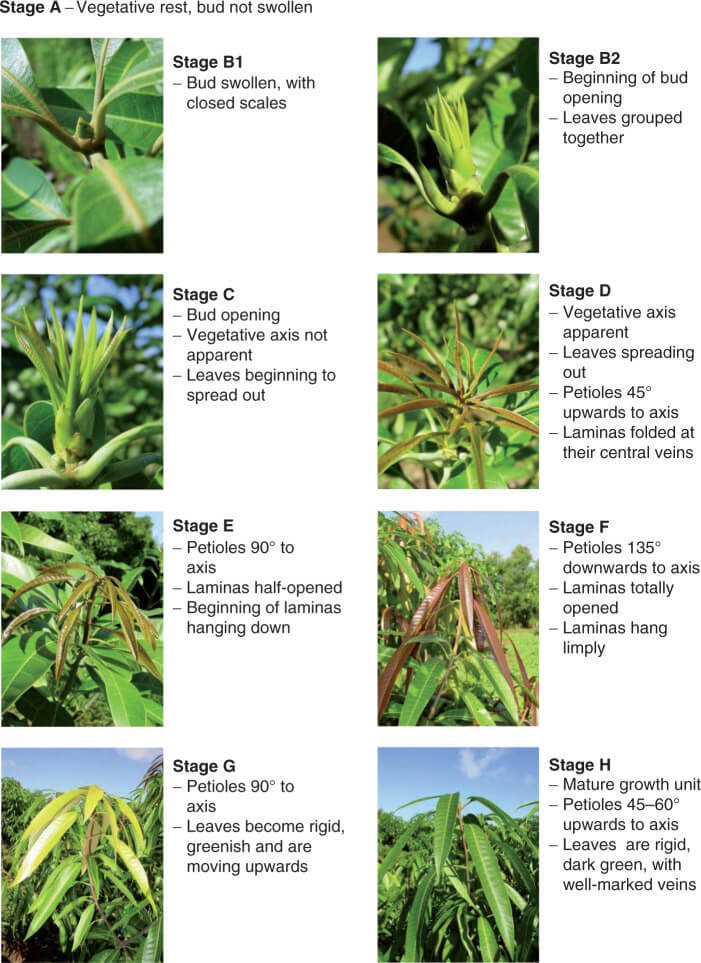Growth is the irreversible increase in plant or organ dimensions over time, such as length, width, diameter, area, volume, and mass. Plant growth patterns are usually characterized by cumulative increments in size over time. They are modeled by an S-shaped curve consisting of three successive phases: an early accelerated phase of exponential growth, a linear phase, and a plateau phase. Conventional methods for growth analysis are usually based on growth parameters at specific time points in organ growth. Plant development is defined as a series of recognizable events leading to qualitative (germination, flowering, etc.) or quantitative (number of leaves, number of flowers, etc.) changes in plant structure. Developmental stages can be used for a variety of purposes. In climatology, they are used as indicators of the effects of climate change on plant development. In agronomy, they determine the best time for plant pest control. They are also used to predict flowering and harvest dates. Growth and development are usually studied separately. However, the two processes are closely related.
 Fig. 1. Developmental stages of mango growth unit (axis and leaves). (Dambreville et al., 2015)
Fig. 1. Developmental stages of mango growth unit (axis and leaves). (Dambreville et al., 2015)
Normally, each cell grows through three stages: cell division, size increase, and differentiation. Each of these stages has its own specific molecular and physiological characteristics. Lifeasible offers comprehensive identification services for plant growth and development characteristics to test the relationship between phenology and growth and development in natural or artificially controlled environments. We aim to help our clients analyze the growth patterns, fertility cycles, and specific needs for light, water, and mineral nutrients of plant varieties to provide a basis for plant trait characterization.
The number of days from seedling to maturity is the total fertility period. The length of the total fertility period indicates how early or late a crop or variety will mature. Our experts record the exact dates when each critical period is reached, in sequence, during growth and development. For example, for cereal crops, we record seedling emergence, the three-leaf stage, tillering, greening, nodulation, tasseling, and maturity. Soybean can record the seedling stage, branching stage, bud stage, flowering stage, podding stage, and maturity. Cotton can be recorded as seedling, bud stage, flowering stage, boll setting stage, and fluffing stage.
The response of plants to periodic light and dark length (or day and night length) is called photoperiodicity or day length effect. Different varieties of the same crop have different photoperiodicity. We use a dark room or artificial subsidized light to create different day lengths. We place the test materials under different day length conditions to determine the critical day length for flowering.
Many long-day-length plants such as winter wheat, cabbage, sugarcane, sugar beet, oilseed rape, and other perennial crops generally do not flower in the year they are planted but only in the following year. This phenomenon is attributed to the vernalization characteristics of the plant. We offer comprehensive methods for identifying the vernalization characteristics of overwintering crop variety material to determine whether the crop is vernal, weakly wintering, or strongly wintering.
There are two types of identification methods: natural environment identification and artificial environment identification.
At different stages of growth and development, our experts will record in detail the temperature, rainfall, air relative humidity, soil quality, soil moisture content, and light, as well as sowing (cuttings), seedling splitting, planting, shoot extraction, flowering, fruiting, seed harvesting period, and field agricultural management measures, as well as the morphological characteristics of growth and development, and the extent of the occurrence of pests and diseases and hazards, etc.
Lifeasible provides identification services for plant growth and development characteristics to correctly evaluate growth and development characteristics such as fertility, light, and temperature responses of crops. So that we can help our customers in cultivation or breeding and seed introduction by recognizing and regulating these characteristics, if you are interested in our services, please contact us for the best solutions to identify plant growth and development characteristics.
Reference